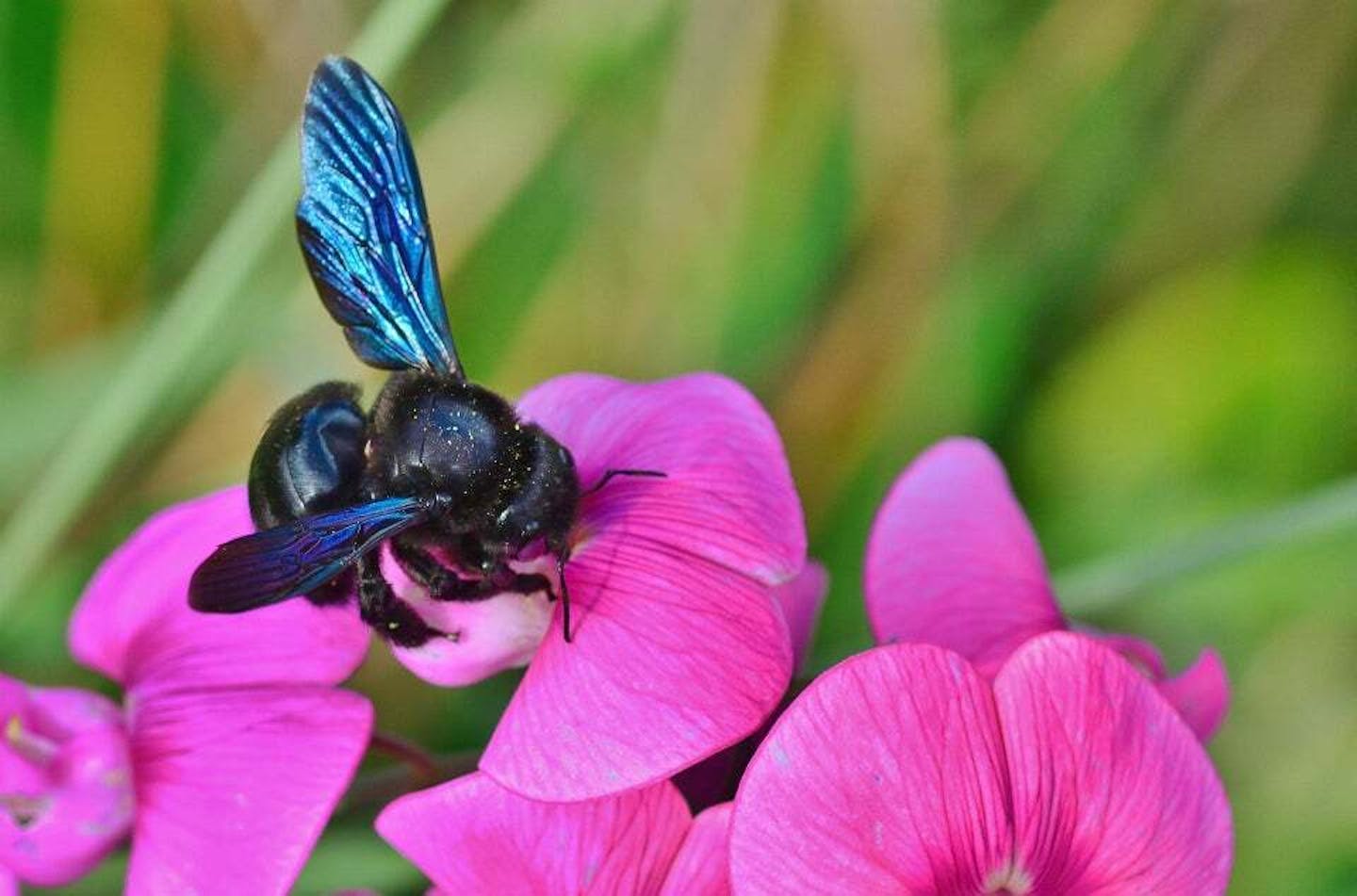Blue Calamintha bee: the brilliant rare pollinator of central Florida
- Nature Conservation
- Land Conservation
- Wildlife
- Pollinators
- Insects
- Southeast US Savannas & Forests
- Northern America Realm
Each Wednesday, One Earth’s “Species of the Week” series highlights a relatively unknown and fascinating species to showcase the beauty, diversity, and remarkable characteristics of our shared planet Earth.
Just as the sky is blue, bees are black and yellow — right? Not necessarily! Scientists recently rediscovered a rare blue bee that had been feared extinct.
Until this spring, the "ultra-rare" blue calamintha bee, scientific name Osmia calaminthae, was known only to exist in central Florida and hadn’t been seen at all since 2016. Then, on March 9, Florida Museum of Natural History research team Chase Kimmel and Jaret Daniels spotted one on a flower.
"We observed a shiny little blue bee grabbing (an Ashe's calamint flower) and rubbing its head on the top portion of the flower 2-3 times," Kimmel said in an email to USA Today.
Since then, the researchers have spotted more of the striking pollinator in three of its four previously known locations in central Florida, as well as six additional locations, according to the museum. The blue bee has unusual facial hairs that are used to collect pollen - hence, the grabbing and rubbing behavior that Kimmel and Daniels observed from the first sighting, which is unusual for bees, and unique to the blue calamintha.
The sightings and now possible research into the bee’s habits and behaviors could have important implications for its chances of survival. The bee is vulnerable in part because it relies on the Ashe's calamint flower, which is threatened and live only in Florida's Lake Wales Ridge region. The area is a hotspot of biodiversity, but also, according to the museum, "one of the nation's fastest-disappearing ecosystems."
Florida's State Wildlife Action Plan lists the bee as a species of greatest conservation need, and the study will help determine if it warrants Endangered Species Act protections.
"It's one thing to read about habitat loss and development and another to be driving for 30-40 minutes through miles of orange groves just to get to a really small conservation site," Kimmel said. "It puts into perspective how much habitat loss affects all the animals that live in this area."
The bee also exhibits unique behaviors. It gathers pollen by bobbing its head side to side to collect it on its facial hairs. The very first time he saw the bee, Kimmel got a chance to see this in action.
"We observed a shiny little blue bee grabbing the flower and rubbing its head on the top portion of the flower two or three times before moving on to another flower," Kimmel told CNN. "In reading about this unique behavior we were pretty shocked to see it."
Kimmel and Daniels' research is set to last two years and determine the bee's feeding and nesting habits. So far, the team has found another plant the bee will use if it can't find Ashe's calamint.
The research has been hampered somewhat by the coronavirus pandemic, since travel restrictions mean Kimmel is in the field alone during the bee's flight season from mid-March to early May.
"It's a very time-limited flight. Now is when the bulk of that activity has to take place," Daniels, who is acting as Kimmel's adviser and is also the director of the museum's McGuire Center for Lepidoptera and Biodiversity, said in the press release. "Chase is doing a fantastic job and we're getting a lot of great data, but if it wasn't for the COVID-19 virus we would have had more people in the field, so it has definitely scaled back what we're able to do."



